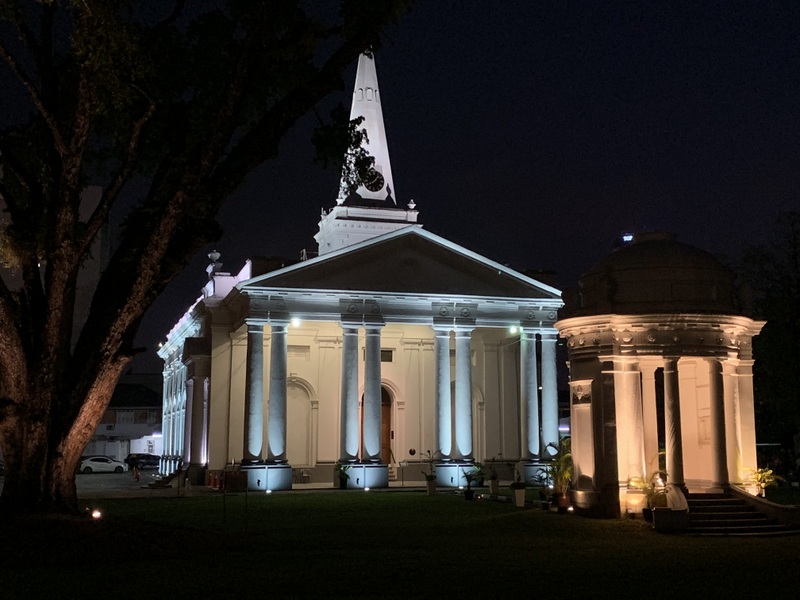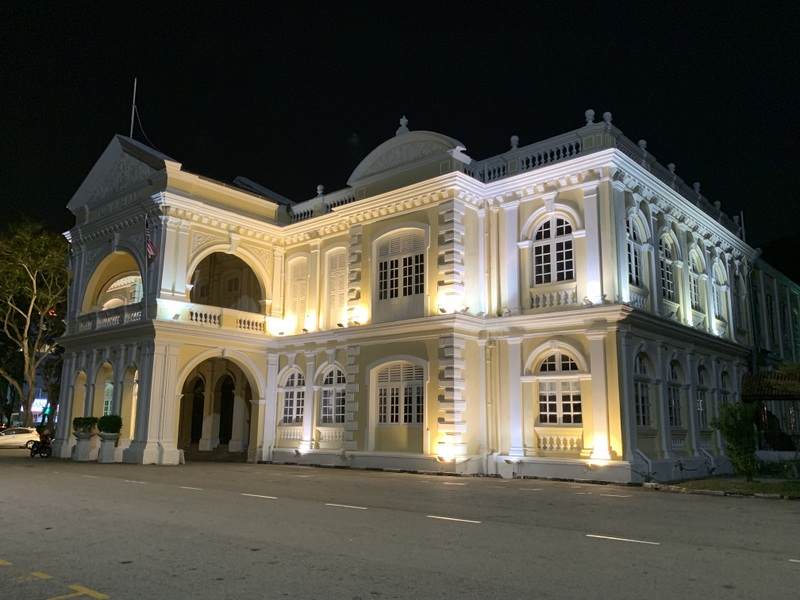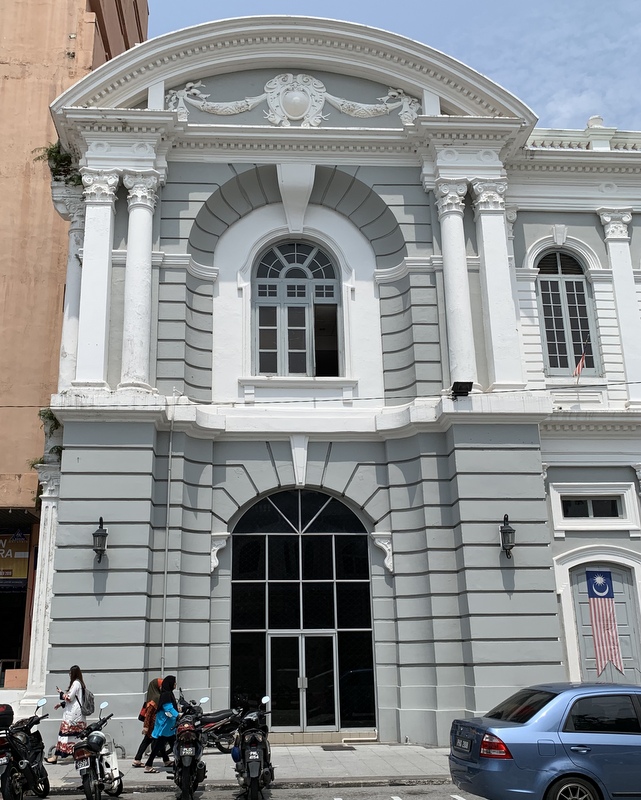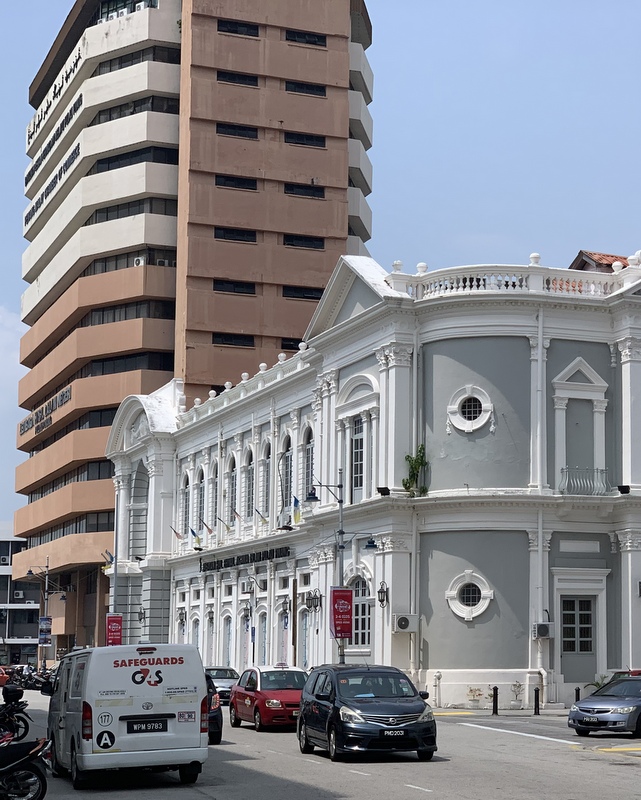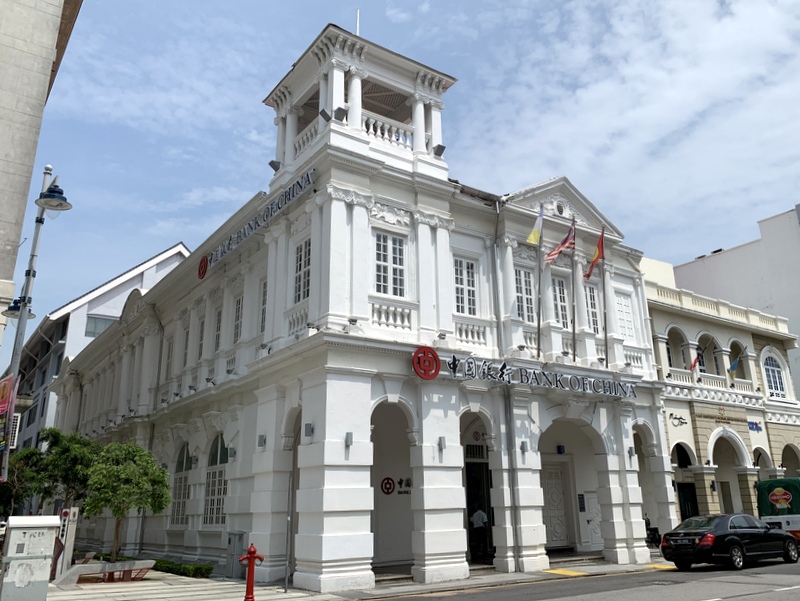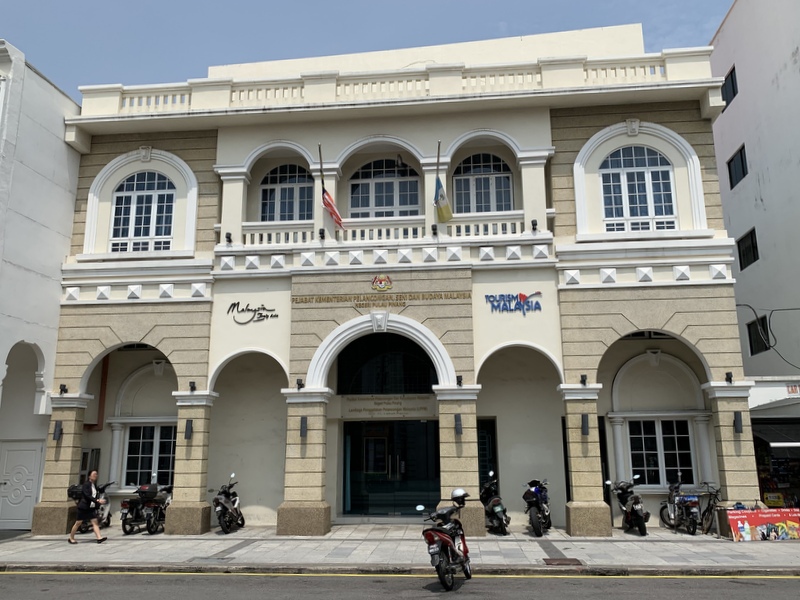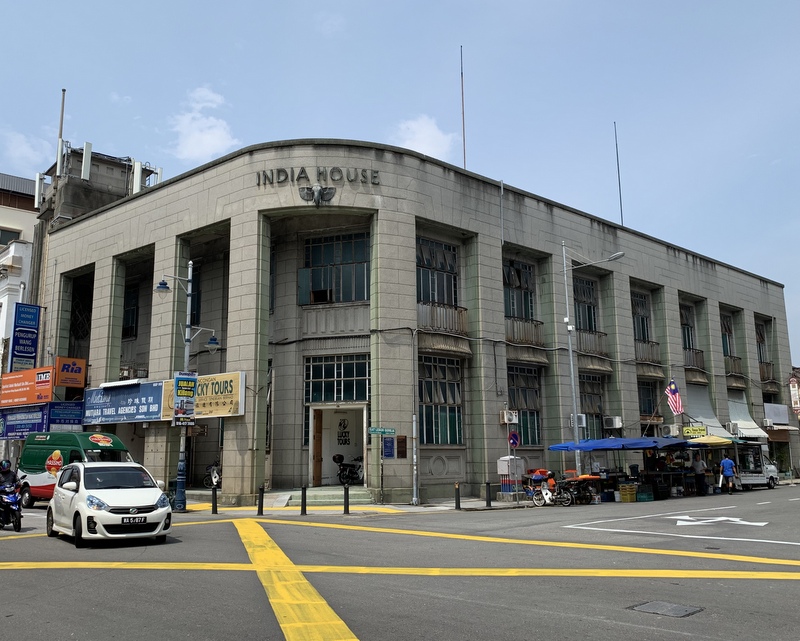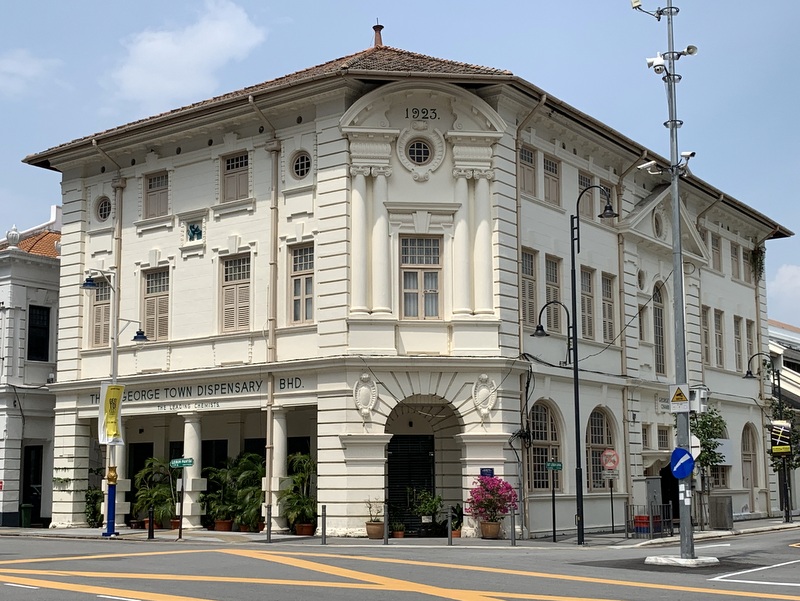During my recent visit to Georgetown, I took some pictures of colonial architecture. There is a lot to see!
On our first evening we walked to the Esplanade. On our way we passed St George’s Church, the oldest Anglican Church in South East Asia, built in 1818.
The Esplanade is dominated by two magnificent buildings, the Town Hall and the City Hall. The City Hall, completed in 1880, is the oldest municipal building of George Town. It housed the Municipal Commission until 1903 when the Commission moved to a larger building next to it, the Municipal Offices. The Town Hall kept its function as meeting place for the European Elite. Nowadays it is used for public events, art exhibitions etc.
The Municipal Offices were one of the first buildings fitted with electrical lights! After Georgetown got city rights in 1957, the Municipal Offices were renamed to City Hall
The next day we explored Beach Street, where a concentration of impressive colonial architecture can be found. We started with the Jubilee Clock Tower, built to commemorate Queen Victoria’s 1897 Diamond Jubilee.
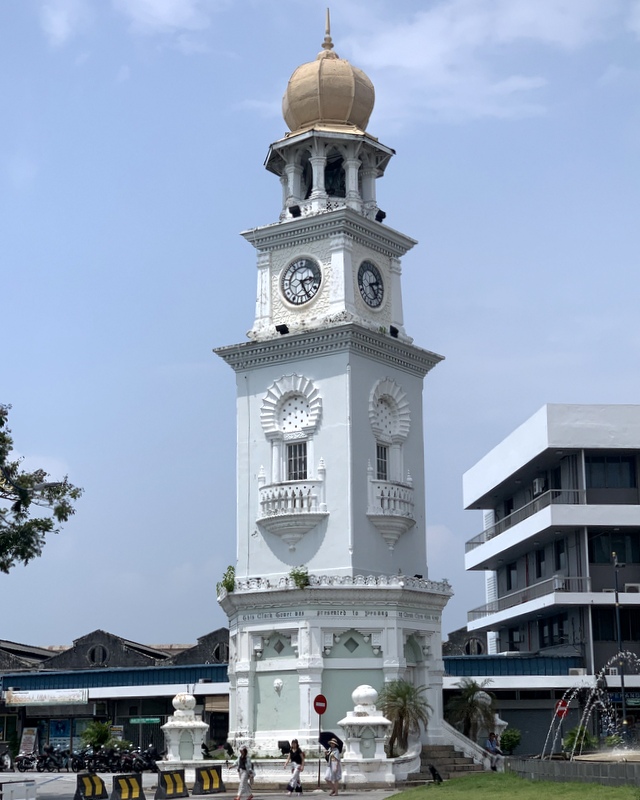
The next building, now housing the Penang Islamic Council, is all that remains of the Straits Settlement Government Buildings, destroyed by allied bombing in 1945 during the Japanese occupation.
Notice the eyesore next to the building. It is the Penang Malay Chamber of Commerce, I wonder who gave permission to build it.
The next building, now housing the Bank of China, is of special interest for a Dutchman, because it was built by the Nederlandse Handel-Maatchappij in 1905.
Next to it the Penang office of Tourism Malaysia. I was wondering if this was a colonial building or a modern one. Could not find much information until I stumbled on a blog George Town’s heritage bank buildings . Originally it was a Mercantile bank, later taken over by HSBC. Recently renovated. So it is an old building in a modern outfit.
The Saw Seng Kew building was originally known as the British India House. Built in the 1920, it has been used by many different companies. In 1965 Rubber Tycoon Saw Seng Kew started the Southern Banking Ltd in this building that now has been renamed after him.
At the right side of the above photo you can just see the corner of the India House. It was built in Art-Deco style, completed in 1941 and forms an striking contrast with the surrounding “older” architecture.
Next to the India House, this Philip Capital Building again dates back to the 1920s. I was wondering at first where the entrance of the parking was, until I noticed that the P is actually the logo of the company 🙂 .
The 1886 building is the oldest commercial building along Beach Street that has kept its original form. In the past it housed the Goon Yen emporium, nowadays it is part of the OCBC. A very attractive building.
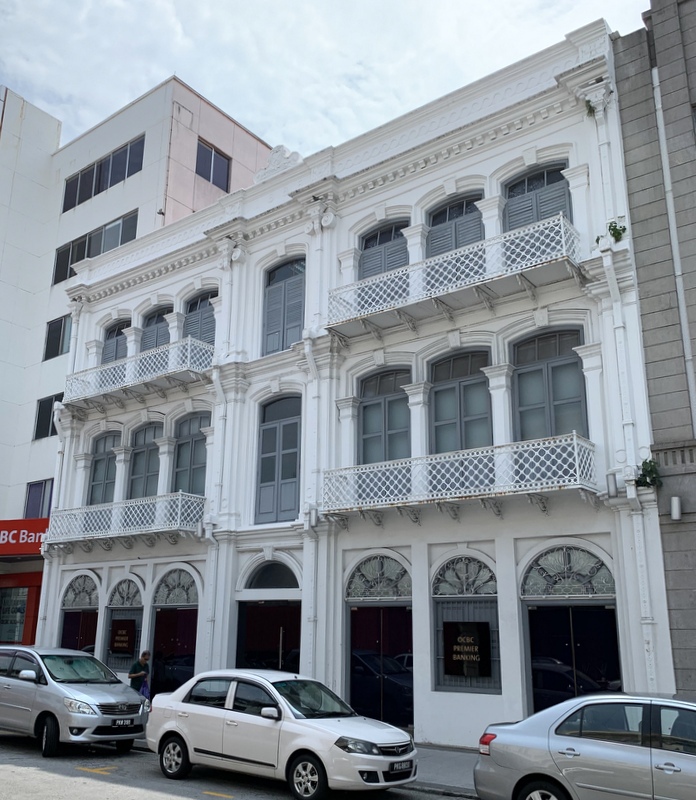
Another gem, the Thio Thiaw Siat building. Named after a Chinese tycoon, who is better known under his Cantonese name Cheong Fatt Tze (who lived in the famous “Blue Mansion”). This building was built by his estate after he passed away in 1916.
The GeorgeTown Dispensary nextdoor, the main pharmacy of Penang in those days, wa originally located where now the TTS building is.
The Central Fire Station was built in 1908. Notice the mix of architectural styles, with a Classical facade and a Moghul-style tower 🙂
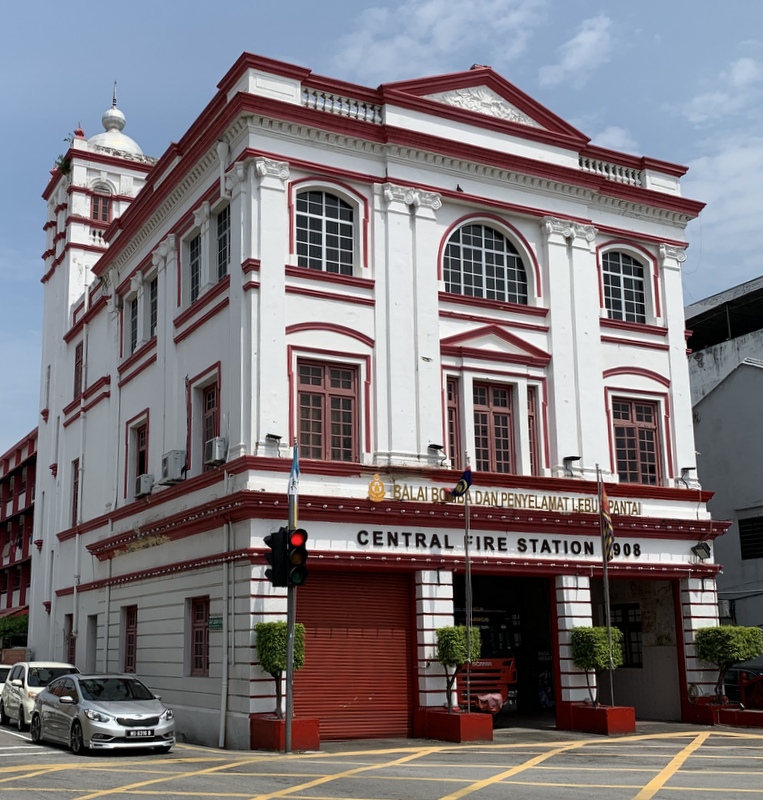
This building is not on Beach Street, but on Bishop Street. I could not find more information about this Cornfield building.
Finally a photo of the Penang Adventist Hospital (1924), nowadays a hotel, located on Muntri Street.
The website of Timothy Tye, Penang Travel Tips, has lots of information about heritage buildings of Penang. And George Town World Heritage Incorporated has published a guide book George Town’sHistoric Commercial & Civic Precincts, that can be downloaded from the Internet as a pdf file.
I am planning to visit Penang again soon and with the help of this guide book, explore many more architectural gems of George Town.

